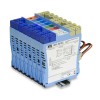 A guide to measurement signal types for sensors & instrumentation, including explanations, applications and choice of products with analog & digital signals.
A guide to measurement signal types for sensors & instrumentation, including explanations, applications and choice of products with analog & digital signals.
Select a sensor or instrument by input or output signal type. Measure or transmit current, voltage, RS232, RS485, USB, solenoid relay switch and logic switch.
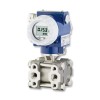 HART® Pressure Transmitters - HART pressure transmitters for configuration via a distributed control system (DCS) or HART communicator.
HART® Pressure Transmitters - HART pressure transmitters for configuration via a distributed control system (DCS) or HART communicator.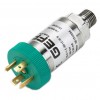 0-10 Volts Output Pressure Transducers - 0 to 10 volts output pressure transducers with amplified signal conditioning electronics and 3 or 4 wire configuration for generating a 0-10Vdc analog signal which corresponds to a specified pressure range.
0-10 Volts Output Pressure Transducers - 0 to 10 volts output pressure transducers with amplified signal conditioning electronics and 3 or 4 wire configuration for generating a 0-10Vdc analog signal which corresponds to a specified pressure range.  0-5 Volts Output Pressure Transducers - 0 to 5 volts output pressure transducers with amplified signal conditioning electronics and 3 or 4 wire configuration for generating a 0-5Vdc analog signal which corresponds to a specified pressure range.
0-5 Volts Output Pressure Transducers - 0 to 5 volts output pressure transducers with amplified signal conditioning electronics and 3 or 4 wire configuration for generating a 0-5Vdc analog signal which corresponds to a specified pressure range.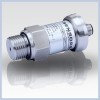 RS485 Serial Interface Pressure Sensors - RS485 output pressure sensors for incorporating into digital sensor networks. These sensors can be allocated a unique device address and connected in series to other sensors with RS-485 serial interfaces on the same communications link.
RS485 Serial Interface Pressure Sensors - RS485 output pressure sensors for incorporating into digital sensor networks. These sensors can be allocated a unique device address and connected in series to other sensors with RS-485 serial interfaces on the same communications link.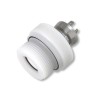 4-20mA Output Hydrostatic Level Transmitters & Sensors - Liquid level transmitters with a 4 to 20 milliamp current loop output signal for determining liquid depth or the fluid level by measuring the hydrostatic pressure.
4-20mA Output Hydrostatic Level Transmitters & Sensors - Liquid level transmitters with a 4 to 20 milliamp current loop output signal for determining liquid depth or the fluid level by measuring the hydrostatic pressure.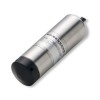 HART® Liquid Level Transmitters - HART liquid level transmitters for configuration via a distributed control system (DCS) or HART communicator.
HART® Liquid Level Transmitters - HART liquid level transmitters for configuration via a distributed control system (DCS) or HART communicator.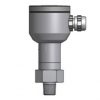 4-20mA Output Pressure Sensors - Choose from an extensive range of pressure with a 4 to 20 milliamp current output signal.
4-20mA Output Pressure Sensors - Choose from an extensive range of pressure with a 4 to 20 milliamp current output signal.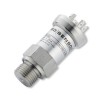 0-20mA Output Pressure Transmitters - 0 to 20 milliamp output pressure transmitters with a 3-wire configuration for installations where the positive voltage supply is separated from the current loop signal wires.
0-20mA Output Pressure Transmitters - 0 to 20 milliamp output pressure transmitters with a 3-wire configuration for installations where the positive voltage supply is separated from the current loop signal wires.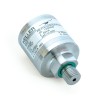 RS232 Serial Interface Pressure Sensors - RS232 compatible pressure transducers for linking to PC computer serial ports.
RS232 Serial Interface Pressure Sensors - RS232 compatible pressure transducers for linking to PC computer serial ports.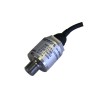 Ratiometric 0.5-4.5 Volts Output Pressure Transducers - Ratiometric voltage output pressure transducer with a 0.5 to 4.5 volt signal which is proportional to the nominal input supply voltage of 5 volt dc.
Ratiometric 0.5-4.5 Volts Output Pressure Transducers - Ratiometric voltage output pressure transducer with a 0.5 to 4.5 volt signal which is proportional to the nominal input supply voltage of 5 volt dc.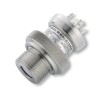 0-10 Volts Output Hydrostatic Sensors, Probes & Transducers - Analog output hydrostatic sensors with a 0 to 10 volt amplified output signal for measuring liquid head pressure or fluid level.
0-10 Volts Output Hydrostatic Sensors, Probes & Transducers - Analog output hydrostatic sensors with a 0 to 10 volt amplified output signal for measuring liquid head pressure or fluid level. USB Pressure Sensors - Universal Serial Bus (USB) interface computer connection pressure sensing devices
USB Pressure Sensors - Universal Serial Bus (USB) interface computer connection pressure sensing devices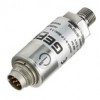 1-5 Volts Output Pressure Transducers - 1 to 5 volts dc output signal pressure transducers with a 4 volt output span proportional to the specified pressure range, with a 1Vdc output signal at the lowest input pressure and 5Vdc output signal at the highest input pressure.
1-5 Volts Output Pressure Transducers - 1 to 5 volts dc output signal pressure transducers with a 4 volt output span proportional to the specified pressure range, with a 1Vdc output signal at the lowest input pressure and 5Vdc output signal at the highest input pressure. Modbus Communications Protocol Pressure Sensors - Pressure sensors with Modbus communications protocol for connecting to a serial bus or a digital sensor network.
Modbus Communications Protocol Pressure Sensors - Pressure sensors with Modbus communications protocol for connecting to a serial bus or a digital sensor network.
Question & Answers
Find answers to questions about analogue and digital measurement signals used to transmit readings from measurement instrumentation.
Analogue vs digital signal usage
Do most sensors have an analogue output?
Yes and no, but typically all sensors start with an analogue signal of some kind , the transducer but normally its too weak a signal to transmit far and is uncompensated for environmental changes. A signal conditioning unit (SCU) compensates and converts the signal to something more universal like RS485, 4-20mA, 0-10Vdc , Modbus, IO-Link, or i2c.
Analogue is still dominant on long cables of say 20-100m, but digital is becoming much more common inside instrumentation and packages, and digital interfaces such as RS485 can be used over much greater distances without data corruption. Sensors on production road vehicles for instance, are becoming all digital, typically use the CANbus digital protocol.
Is 0.5-4.5Vdc output proportional to input supply voltage
Many other companies use “Ratiometric” to describe a pressure transducer with a “0.5 to 4.5 Vdc” output signal. Does it really mean that the output signal is proportional to the input supply and why is it not specified as a sensitivity in mV/V?
mV/V senstivity is used to describe the output of a strain gauge output type device, e.g. 2mV/V, the output is typically much smaller than the input voltage hence the Millivolt to Volts ratio. 0.5 to 4.5 V output is an amplified output where the output is comparable to the input voltage which is typically 5Vdc.
Also on some circuits there is a limitation on the supply voltage e.g. 5V +/-0.5V, and a mV/V description of the output is more suited to describing outputs that can be used with a wide range of supply voltages. However a change in input voltage within those limits of constraint will directly affect the output hence the term “ratiometric”, whereas an input supply that is regulated will maintain a constant output.
Related Help Guides
- How to get a 10 volt signal from a 4-20mA output pressure sensor
- Transforming a 2 wire Current Loop into a Voltage Output Signal
- Supply voltage and load resistance considerations for pressure transmitters
- What can cause random variation in pressure transducer output
- What is the difference between zero offset and zero drift?
- Why use 4-20mA and 3-15 psi rather than 0-20mA & 0-15psi
- What is the difference between a pressure transducer and a transmitter
- What are the advantages of using Wired Sensors instead of Wireless Sensors
- Output signal orientation for a negative gauge pressure range
Related Technical Terms
- 2 Wire
- 3 Wire
- 4 to 20 mA Current Loop Output Signal
- 4 Wire
- Amplified Voltage Output
- BFSG – Bonded Foil Strain Gauge
- Deadband
- FSO – Full Scale Output
- HART®
- mV/V – Millivolts per Volt Output Signal
- NC – Normally Closed
- NO – Normally Open
- Piezoresistive Strain Gauges
- Ratiometric
- Span
- Span Offset
- Span Sensitivity
- Square Root Extraction
- Threshold
- Totalizer
- Transducer
- Transmitter
- TSL – Terminal Straight Line
- TSS – Thermal Span or Sensitivity Shift
- Turndown Ratio
- USB
- Vented Cable
- Wheatstone Bridge Strain Gauge
- Zero Offset
- Zero Tare
Related Online Tools
- Load Cell Millivolt (mV) Output Calculator
- Pressure Transducer Millivolt (mV) Output Calculator
- Torque Transducer Millivolt (mV) Output Calculator
- Strain Gauge Transducer Millivolt (mV) Output Calculator
- Pressure Transmitter 4-20mA Current Output Calculator
- Temperature Transmitter 4-20mA Current Output Calculator
- Flow Transmitter 4-20mA Current Output Calculator
- Liquid Level Transmitter 4-20mA Current Output Calculator
- DP Flow Transmitter Output Calculator
- Pressure Transducer 0-10V Voltage Output Calculator
- Pressure Transducer 0-5V Voltage Output Calculator
- Pressure Transducer 1-5V Voltage Output Calculator
- Pressure Transducer 0.5-4.5V Voltage Output Calculator
- Bit to Measurement Resolution Converter
- Calibration Error Calculator
- Temperature Sensor Calculator
- Pressure Sensor Calculator
- 4 to 20 mA Supply, Load, Shunt and Signal Calculator
- Pressure Transmitter 0-20mA Current Output Calculator


